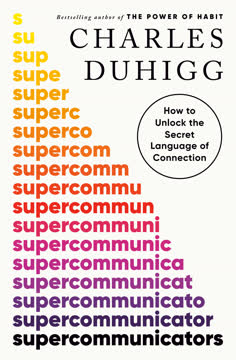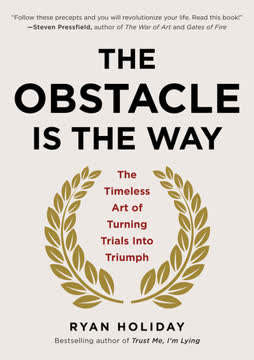Key Takeaways
1. Your thoughts shape your reality: Learn to control them
Nothing is real until your brain decides that it is.
Thoughts are powerful. They shape our perception of reality and influence our emotions, behaviors, and overall well-being. Our brains receive various inputs, including conditioning, recycled thoughts, trapped emotions, and hidden triggers from the external world. These inputs often distort our perception of truth and lead to unhappiness.
To regain control:
- Question the validity of your thoughts
- Identify and challenge negative thought patterns
- Practice mindfulness to observe thoughts without judgment
- Replace harmful thoughts with positive, constructive ones
By becoming aware of your thought processes and actively shaping them, you can create a more positive and fulfilling reality for yourself.
2. Recognize and balance your brain's three defense systems
Your brain has a massive crush on you . . . and just like Jake back in school, your brain's behaviour, which otherwise may appear erratic, is fully explainable by that obsessive crush.
Understanding brain systems. Our brains have three distinct defense systems:
- Reptilian Brain: Responsible for basic survival instincts
- Mammalian Brain: Handles emotions and reward-seeking behavior
- Rational Brain: Manages logic, planning, and self-concept
These systems can lead to three causes of suffering:
- Aversion: Avoiding perceived threats
- Attachment: Clinging to familiar comforts
- All-pervasive dissatisfaction: Constant desire for more
To find balance:
- Recognize when each system is activated
- Practice gratitude to counter dissatisfaction
- Develop resilience to manage aversion and attachment
- Cultivate mindfulness to observe these systems in action
By understanding and balancing these systems, you can reduce unnecessary suffering and increase overall well-being.
3. Embrace both masculine and feminine qualities for wholeness
The only category you belong to is 'you'.
Transcend gender stereotypes. Our brains have both "masculine" (left-brain) and "feminine" (right-brain) qualities, regardless of our biological sex. Embracing both sets of qualities leads to a more balanced and fulfilling life.
Masculine qualities:
- Analytical thinking
- Goal-oriented action
- Linear problem-solving
Feminine qualities:
- Intuition
- Emotional intelligence
- Creativity and holistic thinking
To achieve balance:
- Identify your dominant qualities
- Consciously develop and practice underutilized traits
- Appreciate and learn from others who exhibit different qualities
- Apply both sets of qualities in various life situations
By integrating both masculine and feminine aspects, you can access a wider range of skills and perspectives, leading to greater success and happiness in all areas of life.
4. Practice deliberate attention to stop incessant thinking
Deliberate attention can be learned.
Focus is key. Incessant thinking, or the constant chatter of our minds, is a major source of unhappiness. By practicing deliberate attention, we can quiet this mental noise and experience greater peace and clarity.
Techniques to develop deliberate attention:
- Mindfulness meditation
- Body scan exercises
- Focused breathing
- Single-tasking (doing one thing at a time with full attention)
- Regular "digital detox" periods
Benefits of deliberate attention:
- Reduced stress and anxiety
- Improved concentration and productivity
- Enhanced self-awareness
- Better emotional regulation
- Increased overall well-being
Consistent practice of deliberate attention can rewire your brain, making it easier to maintain focus and resist distractions over time.
5. Experience emotions fully, but don't let them control you
We only feel alive when we feel.
Emotional intelligence matters. Emotions are an essential part of the human experience, but they shouldn't dictate our actions. Learning to acknowledge, experience, and manage emotions is crucial for happiness and well-being.
Steps to develop emotional intelligence:
- Recognize and name emotions as they arise
- Allow yourself to feel emotions without judgment
- Identify the thoughts or events triggering the emotions
- Observe the physical sensations associated with each emotion
- Choose how to respond, rather than reacting impulsively
Benefits of emotional intelligence:
- Better relationships
- Improved decision-making
- Increased resilience
- Enhanced self-awareness
- Greater overall life satisfaction
By developing a healthy relationship with your emotions, you can harness their power while maintaining control over your actions and responses.
6. Use the happiness flow chart to navigate challenges
Between every event and your response to it, there is a gap – a moment of buffer where life hands the control over to you.
A systematic approach to happiness. The happiness flow chart provides a structured method for dealing with life's challenges and maintaining a positive outlook.
Key steps in the flow chart:
- Start with awareness: Are you happy?
- If not, identify what you feel
- Determine the trigger for your emotions
- Question if the trigger thought is true
- If true, ask if you can do something about it
- If you can't, practice acceptance and commitment
Benefits of using the flow chart:
- Reduced time spent in negative emotional states
- Improved problem-solving skills
- Increased sense of control over life circumstances
- Greater resilience in the face of challenges
By consistently applying this approach, you can develop a more positive and proactive mindset, leading to greater overall happiness and life satisfaction.
7. Find flow in everyday tasks for peak performance and joy
Flow is the state when the doing and the being merge as one.
Harness the power of flow. Flow is a state of optimal experience where you become fully immersed in an activity, losing track of time and self-consciousness. This state leads to peak performance and a deep sense of satisfaction.
Characteristics of flow:
- Clear goals and immediate feedback
- Balance between challenge and skill level
- Merging of action and awareness
- Loss of self-consciousness
- Altered sense of time
- Autotelic experience (intrinsically rewarding)
Ways to cultivate flow in daily life:
- Choose activities that match your skill level and interest
- Set clear, achievable goals for tasks
- Minimize distractions in your environment
- Focus intensely on the present moment
- Gradually increase the challenge as your skills improve
By learning to enter flow states more frequently, you can increase productivity, creativity, and overall life satisfaction.
8. Giving to others is the ultimate path to personal happiness
While my mission is to make others happy, every day it has been making me happier and happier too.
Altruism breeds joy. The act of giving and helping others is not only beneficial for the recipients but also profoundly impacts the giver's happiness and well-being.
Benefits of giving:
- Increased sense of purpose and meaning
- Enhanced social connections
- Improved self-esteem and self-worth
- Reduced stress and negative emotions
- Greater overall life satisfaction
Ways to incorporate giving into your life:
- Volunteer for causes you care about
- Perform random acts of kindness
- Share your skills and knowledge with others
- Donate to charitable organizations
- Offer emotional support to friends and family
By making giving a central part of your life, you can create a positive feedback loop of happiness and fulfillment for yourself and others.
Last updated:
FAQ
What's That Little Voice In Your Head about?
- Focus on Happiness: The book delves into how our thoughts influence our happiness, highlighting the significant impact of our inner dialogue on our emotional state.
- Neuroscience and Spirituality: It integrates insights from neuroscience, computer science, and spiritual teachings to offer a comprehensive understanding of brain function.
- Practical Tools: Mo Gawdat provides exercises and tools to help readers reprogram their thoughts for a happier life.
Why should I read That Little Voice In Your Head?
- Personal Mission: Mo Gawdat shares his journey and insights from the loss of his son, aiming to make a billion people happy.
- Transformative Insights: The book challenges misconceptions about happiness and serves as a user manual for the brain.
- Actionable Advice: It includes practical exercises that can be immediately implemented to enhance mental well-being.
What are the key takeaways of That Little Voice In Your Head?
- Thoughts Shape Reality: The book emphasizes that unhappiness begins with negative thinking, underscoring the power of thoughts.
- 4-3-2-1 Model: Gawdat introduces a model explaining the neural causes of suffering, including wrong inputs and exaggerated defenses.
- Be–Learn–Do Model: A systematic approach to happiness involving awareness, learning, and action is presented.
How does Mo Gawdat define happiness in That Little Voice In Your Head?
- Happiness Equation: Gawdat defines happiness as being greater than or equal to the perception of life events minus expectations.
- Innate Happiness: He argues that happiness is our default state, clouded by negative thoughts and societal pressures.
- Predictable Happiness: Happiness is seen as predictable and achievable by adjusting thoughts and expectations.
What is the 4-3-2-1 model in That Little Voice In Your Head?
- Four Wrong Inputs: These include conditioning, recycled thoughts, trapped emotions, and hidden environmental triggers.
- Three Exaggerated Defenses: Aversion, attachment, and dissatisfaction are identified as defense mechanisms leading to suffering.
- Two Polarities: The balance between feminine (being) and masculine (doing) qualities is essential for happiness.
What practical exercises are included in That Little Voice In Your Head?
- Awareness Exercises: Exercises like "What Triggers Your Thoughts" help identify negative thought patterns.
- Practice Exercises: Steps such as "Cleaning Out Your Closet" encourage detachment from material and emotional baggage.
- Daily Gratitude: The "Count Your Blessings" exercise fosters a positive mindset by reflecting on gratitude.
What is the significance of the "Be–Learn–Do" model in That Little Voice In Your Head?
- Systematic Approach: It emphasizes awareness of thoughts and feelings before taking action for thoughtful responses.
- Balance of Qualities: Encourages balancing feminine (being) and masculine (doing) qualities for a fulfilling life.
- Continuous Learning: Promotes lifelong learning and adaptation for personal growth and happiness.
How does That Little Voice In Your Head address the concept of incessant thinking?
- Definition of Incessant Thinking: Described as a loop of obsessive rumination leading to unhappiness.
- Impact on Emotions: Linked to the Default Mode Network (DMN) in the brain, active when not focused on tasks.
- Need for Deliberate Attention: Advocates for developing deliberate attention to combat incessant thinking.
What is the concept of neuroplasticity in That Little Voice In Your Head?
- Brain's Ability to Change: Neuroplasticity refers to the brain's capacity to reorganize and form new connections.
- Impact on Emotions: Practicing emotional awareness can lead to changes in the brain, aiding emotional management.
- Practical Application: Encourages exercises like mindfulness to promote neuroplasticity and positive emotional change.
How can I apply the principles from That Little Voice In Your Head in my daily life?
- Practice Emotional Awareness: Regularly check in with emotions and identify triggers through journaling or mindfulness.
- Engage in Giving: Incorporate acts of kindness into daily routines to boost personal happiness.
- Utilize the Happiness Flow Chart: Follow the flow chart to navigate unhappiness by identifying triggers and actionable steps.
What is the relationship between emotions and thoughts in That Little Voice In Your Head?
- Emotions are Triggered by Thoughts: Every emotion is a response to a thought, crucial for managing emotional responses.
- Thoughts Can Be Reframed: Recognizing and reframing negative thoughts can alter emotional responses.
- Awareness is Key: Being aware of thoughts and emotions is essential to break negative thinking cycles.
What are the best quotes from That Little Voice In Your Head and what do they mean?
- "You are in charge.": Emphasizes personal responsibility for happiness and the power to change thoughts and emotions.
- "Practice makes miserable.": Warns against repeated negative thinking, encouraging positive habits instead.
- "Happiness is predictable.": Encapsulates the message that happiness can be achieved through understanding and managing thoughts.
Review Summary
Readers praise That Little Voice In Your Head for its practical approach to happiness, combining computer science concepts with neuroscience. Many find the exercises and insights helpful, especially during difficult times. The book is commended for its unique perspective and actionable advice. However, some criticize it for being repetitive and selective with scientific evidence. Overall, reviewers appreciate Gawdat's personal anecdotes and his mission to spread happiness, though opinions vary on the book's length and effectiveness.
Similar Books







Download PDF
Download EPUB
.epub digital book format is ideal for reading ebooks on phones, tablets, and e-readers.







